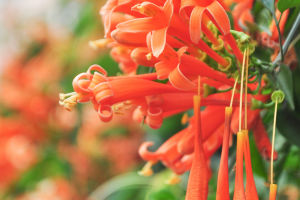Nature has bestowed upon us a plethora of captivating floral wonders, each with its unique charm.
Among them, the crocus stands out as a delicate and enchanting flower. With its vibrant hues and intricate form, the crocus brings a touch of elegance to gardens, meadows, and even indoor spaces.
Let's delve deeper into the captivating world of crocuses, exploring their characteristics, symbolism, and significance.
A Blossom of Remarkable Diversity:
Crocuses belong to the iris family and encompass around 90 species, which are further classified into several colorful varieties. These versatile flowers showcase a remarkable diversity in their appearance, with petals ranging from snowy whites to vivid purples, yellows, and blues. The most common species include the Crocus sativus, Crocus vernus, and Crocus chrysanthus, each possessing its unique characteristics.
Early Harbingers of Spring:
Crocuses hold a special place in the hearts of many as the heralds of spring. These resilient blooms bravely emerge from the still-chilly ground, often pushing through snow or frost, announcing the arrival of the much-awaited season. Their appearance signifies renewal, rejuvenation, and the promise of warmer days ahead. Crocuses are often the first flowers to bloom, painting landscapes with vibrant colors after the grayness of winter.
Elegant and Intricate Structure:
The structure of a crocus flower is an intriguing marvel in itself. Its cup-shaped blooms feature three outer petals known as tepals and three inner petals forming a striking contrast in color. The prominent central stigma is usually a vibrant orange or red, adding a touch of intensity to the overall composition. The slender, grass-like leaves sprout from the base of the flower, providing an elegant backdrop to the blossoms.
Symbolism and Cultural Significance:
Throughout history, crocuses have held symbolic meanings in various cultures. In Greek mythology, the crocus is associated with the story of Crocus and Smilax, representing faithful love and devotion. In Persian culture, the Crocus sativus, also known as the saffron crocus, holds great significance as the source of saffron, a highly valued spice. The delicate and fleeting nature of crocuses also symbolizes the transience of life and the importance of appreciating its fleeting beauty.
Medicinal and Culinary Uses:
Beyond their ornamental value, crocuses have practical applications as well. Saffron, derived from the stigmas of the Crocus sativus, is one of the most expensive spices in the world. It is widely used in culinary traditions globally, lending a unique flavor and rich golden hue to dishes. Moreover, crocuses have been utilized in traditional medicine for their therapeutic properties, particularly in treating digestive and respiratory ailments.
Cultivation and Care:
Crocuses are relatively easy to grow, making them a popular choice among gardeners. These flowers thrive in well-drained soil and require ample sunlight to bloom beautifully. They can be planted in the fall, allowing their corms (similar to bulbs) to establish roots before winter. Crocuses are known for their naturalizing ability, spreading gracefully over time, and creating stunning displays of color in gardens, lawns, and even rockeries.
A Source of Inspiration:
The enchanting beauty of crocuses has captivated artists, poets, and photographers alike. Their delicate petals and vibrant colors have served as inspiration for countless works of art. From vibrant impressionist paintings to close-up photographs capturing their intricate details, crocuses have been celebrated for their ethereal allure.


